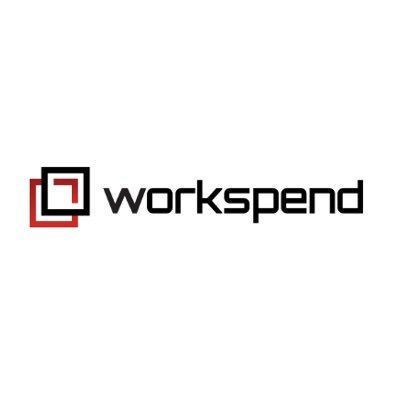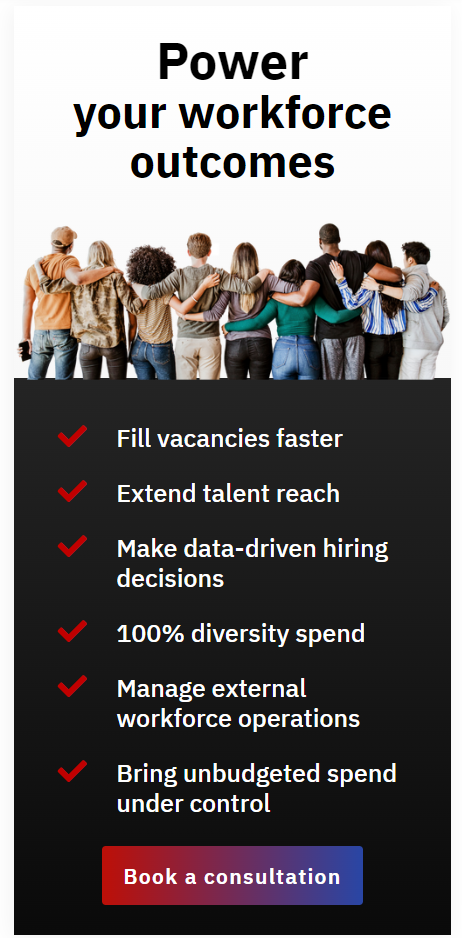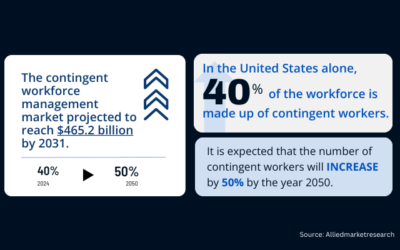
Jake Ellis - 5 min read
Is it Time to Invest in Workforce Analytics?
In the dynamic landscape of today’s business world, staying ahead isn’t just an advantage; it’s an absolute necessity. Workforce analytics has emerged as a pivotal tool for forward-thinking companies aiming to navigate the fast-paced market successfully. It’s time for organizations to recognize that the traditional quarterly reviews fall short as true change agents. They can no longer keep pace with the rapid changes in the job market and increasing employee expectations. They’re unable to keep up with the swift transformations in the job market and the growing expectations of employees.
The time is now to lean into workforce analytics. Luckily, the technology is available today to create an umbrella across different systems, providing a holistic view of how we’re sourcing talent and leading to smarter, more strategic decision-making.
Have a look at the latest stats
-
-
-
- The size of the worldwide Workforce Analytics market achieved USD 1972.07 million.
- A projected Compound Annual Growth Rate (CAGR) of 16.58% anticipates its future expansion.
- During the forecast period, the global Workforce Analytics market is poised to attain the value of USD 4951.15 million.
Source: Fortune Business Insight
-
-
Traditional quarterly reviews are yesterday’s news
Traditional quarterly reviews often become a read-back of what happened in the last period. These sessions tend to focus on past activities and results, which, while important, don’t provide the proactive insights needed to drive future change. They have become more about MSP program managers justifying their position, rather than an initiative to improve contingent workforce management. The importance of being agile in business is not something new.
A McKinsey study found that focussing on enterprise agility, driven by data and analytics, can improve customer satisfaction by up to 30 percent.
Many organizations find themselves trapped in a backward data approach, hindering their ability to stay ahead. If you rely solely on regular quarterly reviews, you are not going to get to the root of the issue. Instead it will remain simmering under the surface until it is too late to do anything about it and you lose the competitive advantage to your competition.
While these reviews might be data-rich, they could fall short of being the proactive change agents needed to address emerging problems. This reactive, rather than proactive, stance could potentially leave you a step behind, racing to catch up with issues that could have been anticipated and mitigated. It’s evident that the future demands a shift from the backward quarterly business review approach to a more analytical and forward-looking strategy.
The technology is already here
Digital transformation is one of the biggest factors that can lead to seismic change in the market. This is especially true in workforce management. The latest in workforce analytics technology can provide a holistic view of an organization’s talent, bringing together separate systems and departmental silos to offer a clear, actionable picture. The adoption of a technology platform that can offer this is not just an operational upgrade; it’s a strategic revolution, providing the initiative needed to improve contingent workforce management.
By leveraging a powerful analytics platform, such as Workspend’s WRAP, you’re able to sift through data from various viewpoints such as recruitment, performance, pay, and retention before combining them into a single picture. This integration can give you the ability to sharpen your decision-making, and widening the scope of your strategic planning. This means you can react swiftly to immediate challenges and also anticipate future trends and prepare accordingly. It’s this kind of foresight that is needed to turn good business decision into a competitive advantage.
Pivot from past performance to proactive planning
The traditional, backward-looking approach to workforce management, with its focus on what has been, is comfortable but can stifle innovation and halt progress. A lot of programs are not improving as they should because of this backwards quarterly business approach that provides feedback on performance rather than acting as a change agent.
The philosophy here is simple: embrace continuous improvement. It’s not enough to look back at performance metrics and call it a day. Instead, you need to adopt an approach that is dynamic, using performance feedback as a starting point, not the end goal.
For example, if a company’s onboarding process is sluggish, a forward-thinking strategy, powered by workforce analytics, could identify the pain points. Armed with this insight, the company can specifically target and revamp the onboarding process. The potential benefits of this proactive strategy are a more engaging onboarding experience, which could lead to heightened satisfaction for new hires and a considerable reduction in early leaver rates.
Embracing such proactive strategies is crucial for breaking free from the status quo and stepping into a more proactive future. It is this kind of innovative thinking and action that positions a company as a change agent in the field of talent management.
Predicting the future is now a reality
Embarking on the journey towards exceptional talent management, predictive analytics offers an opportunity to predict future opportunities and bottlenecks that aren’t yet visible to talent leaders. Such foresight enables the anticipation of trends, opportunities, and challenges before they come to the forefront.This foresight empowers proactive decision-making, allowing organizations to stay ahead of the curve by anticipating trends, opportunities, and obstacles before they manifest.
For example, consider the rise in remote work opportunities. Predictive analytics could have provided the insight needed to prepare and adapt its policies and processes in advance, by viewing an increase in the number of remote positions taken and comparing them to the rest of your workforce data. This could have ensured a smooth transition and evaluation of remote working instead of being reactive and leadership being at odds with employee expectations.
Having a dashboard that can display a holistic view of your company’s workforce data across different systems can allow you to answer not only the ‘what’ and ‘why’ of today but also the ‘what if’ of tomorrow. By analysing patterns and trends, you can craft educated predictions that shape our strategic direction.
Conclusion
The message is clear: investing in workforce analytics is not just something you need to think about, it’s essential. Relying solely on traditional quarterly reviews and backward looking approaches to data is no longer enough. At Workspend, we’re embracing holistic analytics to drive a proactive approach to talent management.
What are the benefits of this shift? Expect to witness heightened efficiency, sharper decision-making, and the ability to plan with unwavering confidence. It’s a departure from the old reactive methods, ushering in an era where analytics becomes the lens through which you truly comprehend and mould the future of your workforce.
Upcoming Events
You may also like:
Navigating Workforce Management: To MSP or Not to MSP?
Managed Contingent Workforce: To MSP or Not to MSP?In the continually evolving landscape of workforce management, businesses often find themselves at a crucial crossroads – should they handle the management of their contingent workforce internally, or would partnering...
AI Should Augment Human Intelligence, Not Replace It
Will smart machines replace human workers? How human intelligence can work with artificial intelligence to produce augmented intelligence.
Reducing Contingent Labor Costs: Strategies for Maximizing Efficiency
Discover how Workspend can help you reduce contingent labor costs and boost efficiency. Gain insights, implement strategic sourcing, optimize workforce planning, and ensure compliance. Partner with us for streamlined solutions. Contact us today!
Power your workforce outcomes with a diversity MSP






